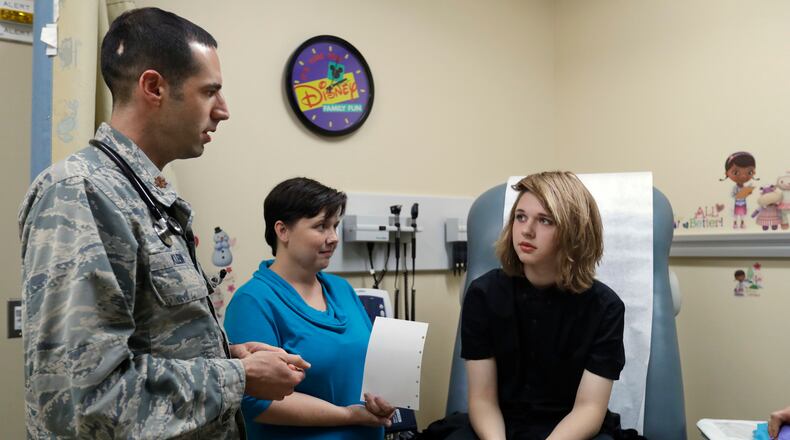The military health program will cover therapy and hormone treatments along with surgery for approved service members diagnosed with gender dysphoria. The policy does not yet extend to military dependents.
>> Got a question about the news? See our explainers here
The RAND Corp., a nonprofit institute that researches and analyzes government policies, estimates the new DOD plan will cost between $2.4 million and $8.4 million each year.
According to RAND, there are between 2,500 – 7,000 transgender service members on active duty in today’s military.
At least five transgender troops – three sailors or Marines and two airmen – are currently pursuing treatment outside the military health care system, USA Today reported.
Here's what the policy says:
• Effective immediately (when it was first announced on June 16, 2016), transgender Service members may serve openly, and they can no longer be discharged or otherwise separated from the military solely for being transgender individuals.
• These policies will be implemented in stages over the next 12 months—starting most immediately with addressing the needs of current Service members and their commanders, and followed by training for the entire force, and ultimately, beginning to admit transgender recruits.
On June 16, 2016:
• Otherwise qualified service members can no longer be involuntarily separated, discharged, or denied reenlistment or continuation of service solely for being transgender individuals.
As of Oct. 1, 2016:
• The Department will issue a training handbook for commanders, transgender service members, and the force.
• The Department will issue medical guidance for providing transition related care to transgender service members.
• The Military Health System will be required to provide transgender service members with all medically necessary care related to gender transition, based on the guidance that is issued
Service members will be able to begin the process to officially change their gender in our personnel management systems.
Between October 2016 – June 2017:
• Based on detailed guidance and training materials that will be issued, the services will conduct training of the force — from commanders, to medical personnel, to the operating forces, and recruiters.
Not later than July 1, 2017:
• When the training of the force is complete, the military services will begin accessing transgender applicants who meet all standards—holding them to the same physical and mental fitness standards as everyone else who wants to join the military.
• The gender identity of an otherwise qualified individual will not bar them from joining the military, from admission to our Service Academies, or from participating in ROTC or any other accession program.
• Our initial accession policy will require an individual to have completed any medical treatment that their doctor has determined is necessary in connection with their gender transition, and to have been stable in their preferred gender for 18 months, as certified by their doctor, before they can enter the military.
• This standard will be reviewed no later than 24 months from July 1, 2016 to ensure it reflects what more we learn as this is implemented, as well as the most updated medical information.
• Service members with a diagnosis from a military medical provider indicating that gender transition is medically necessary will be provided medical care and treatment for the diagnosed medical condition, in the same manner as other medical care and treatment.
• Gender transition in the military begins when a service member receives a diagnosis from a military medical provider indicating that gender transition is medically necessary, and concludes when the service member’s gender marker is changed in the Defense Enrollment Eligibility Reporting System (DEERS) and the service member serves and is recognized in the preferred gender.
• At that point, the service member is responsible for meeting all applicable military standards in the preferred gender and will use berthing, bathroom, and shower facilities associated with their gender.
• Any discrimination against a service member based on their gender identity is sex discrimination and may be addressed through the Department’s equal opportunity channels.
About the Author
